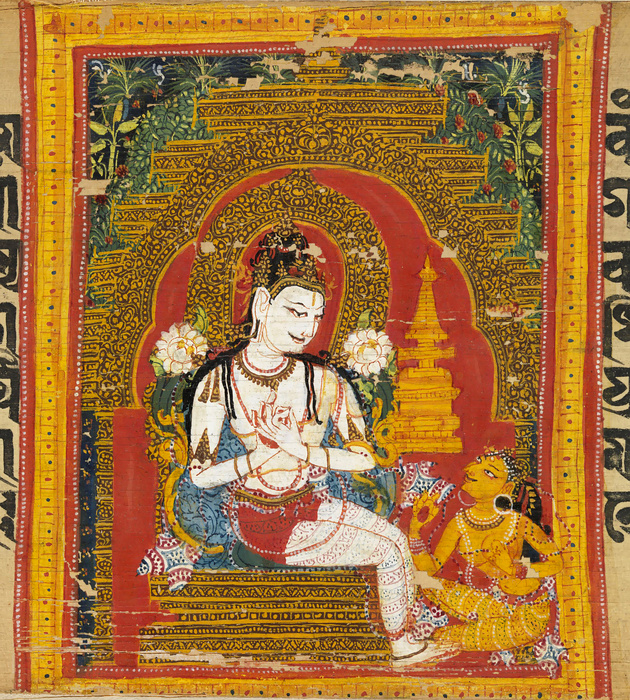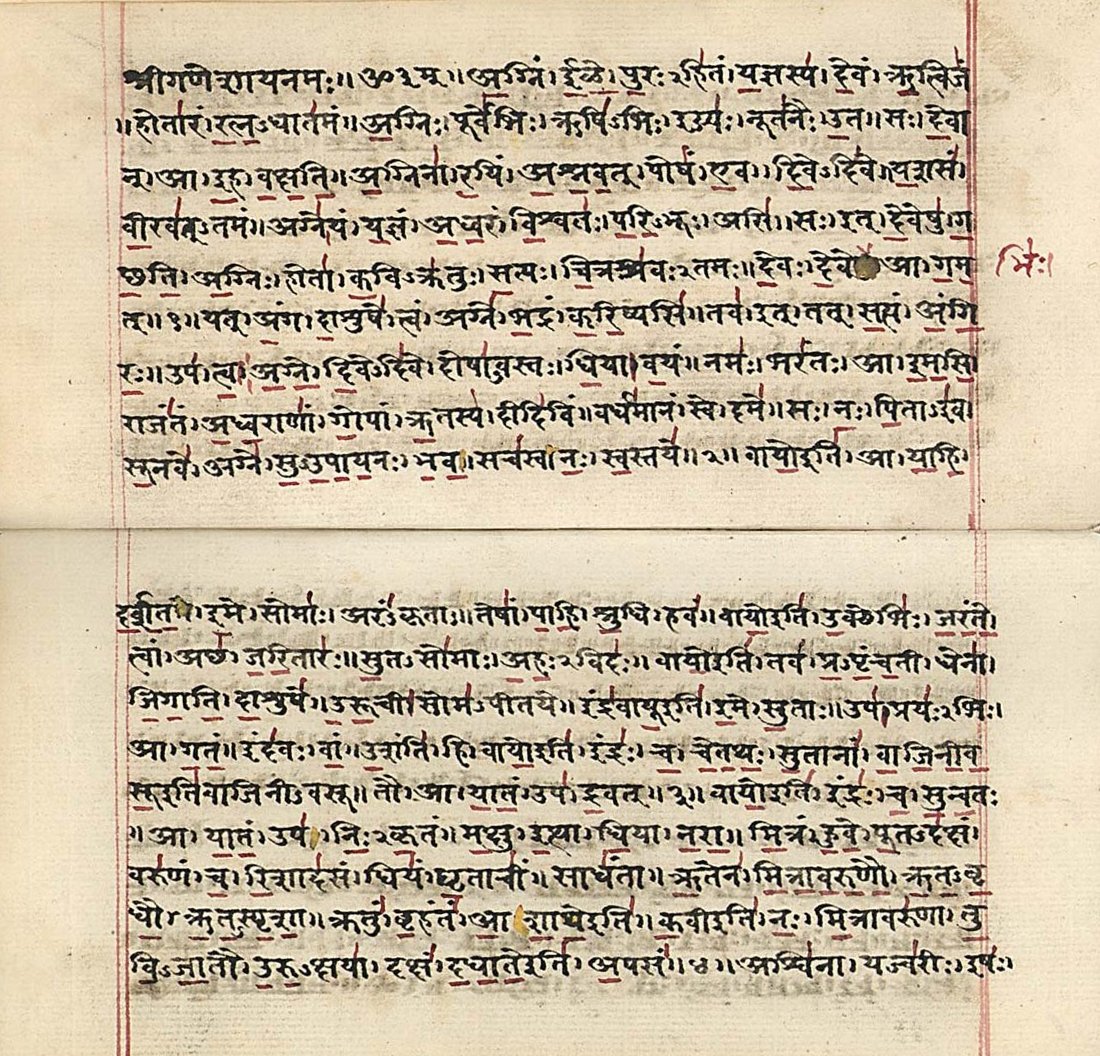|
Pāramitā
''Pāramitā'' (Sanskrit, Pali: पारमिता) or ''pāramī'' (Pāli: पारमी) is a Buddhist term often translated as "perfection". It is described in Buddhist commentaries as a noble character quality generally associated with enlightened beings. ''Pāramī'' and ''pāramitā'' are both terms in Pali but Pali literature makes greater reference to ''pāramī'', while Mahayana texts generally use the Sanskrit ''pāramitā.'' Etymology Donald S. Lopez Jr. describes the etymology of the term: Theravāda Buddhism Theravada teachings on the ''pāramīs'' can be found in late canonical books and post-canonical commentaries. Theravada commentator Dhammapala describes them as noble qualities usually associated with bodhisattvas. American scholar-monk Thanissaro Bhikkhu describes them as perfections ''(paramī)'' of character necessary to achieve enlightenment as one of the three enlightened beings, a '' samma sambuddha'', a '' pacceka-buddha'', or an '' arahan ... [...More Info...] [...Related Items...] OR: [Wikipedia] [Google] [Baidu] |
Bodhisattva
In Buddhism, a bodhisattva is a person who has attained, or is striving towards, '' bodhi'' ('awakening', 'enlightenment') or Buddhahood. Often, the term specifically refers to a person who forgoes or delays personal nirvana or ''bodhi'' in order to compassionately help other individuals reach Buddhahood. In the Early Buddhist schools, as well as modern Theravāda Buddhism, bodhisattva (or bodhisatta) refers to someone who has made a resolution to become a Buddha and has also received a confirmation or prediction from a living Buddha that this will come to pass. In Theravāda Buddhism, the bodhisattva is mainly seen as an exceptional and rare individual. Only a few select individuals are ultimately able to become bodhisattvas, such as Maitreya. In Mahāyāna Buddhism, a bodhisattva refers to anyone who has generated '' bodhicitta'', a spontaneous wish and compassionate mind to attain Buddhahood for the benefit of all sentient beings. Mahayana bodhisattvas are spiritua ... [...More Info...] [...Related Items...] OR: [Wikipedia] [Google] [Baidu] |
Jataka Tales
The ''Jātaka'' (Sanskrit for "Birth-Related" or "Birth Stories") are a voluminous body of literature native to the Indian subcontinent which mainly concern the previous births of Gautama Buddha in both human and animal form. Jataka stories were depicted on the railings and torans of the stupas. According to Peter Skilling, this genre is "one of the oldest classes of Buddhist literature."Skilling, Peter (2010). ''Buddhism and Buddhist Literature of South-East Asia,'' pp. 161–162. Some of these texts are also considered great works of literature in their own right.Shaw, Sarah (2006). ''The Jatakas: Birth Stories of Bodhisatta'', p. xxii. Penguin UK. The various Indian Buddhist schools had different collections of jātakas. The largest known collection is the '' Jātakatthavaṇṇanā'' of the Theravada school, as a textual division of the Pāli Canon, included in the '' Khuddaka Nikaya'' of the ''Sutta Pitaka''. In these stories, the future Buddha may appear as a king, an o ... [...More Info...] [...Related Items...] OR: [Wikipedia] [Google] [Baidu] |
Mahayana
Mahāyāna ( ; , , ; ) is a term for a broad group of Buddhist traditions, Buddhist texts#Mahāyāna texts, texts, Buddhist philosophy, philosophies, and practices developed in ancient India ( onwards). It is considered one of the three main existing branches of Buddhism, the others being Theravāda and Vajrayāna.Harvey (2013), p. 189. Mahāyāna accepts the main scriptures and teachings of Early Buddhist schools, early Buddhism but also recognizes various doctrines and texts that are not accepted by Theravada Buddhism as original. These include the Mahāyāna sūtras and their emphasis on the ''bodhisattva'' path and Prajnaparamita, ''Prajñāpāramitā''. Vajrayāna or Mantra traditions are a subset of Mahāyāna which makes use of numerous Tantra, tantric methods Vajrayānists consider to help achieve Buddhahood. Mahāyāna also refers to the path of the bodhisattva striving to become a fully awakened Buddha for the benefit of all sentience, sentient beings, and is thus also ... [...More Info...] [...Related Items...] OR: [Wikipedia] [Google] [Baidu] |
Śīla
Buddhist ethics are traditionally based on the Enlightenment in Buddhism, enlightened perspective of the Buddha. In Buddhism, ethics or morality are understood by the term ''śīla'' () or ''sīla'' (Pāli). ''Śīla'' is one of three sections of the Noble Eightfold Path. It is a code of conduct that emulates a natural inborn nature that embraces a commitment to harmony, equanimity, and self-regulation, primarily motivated by nonviolence or freedom from causing harm. It has been variously described as virtue, moral discipline uprightness and precept, skillful conduct. In contrast to the english word "morality" (i.e., obedience, a sense of obligation, and external constraint), Sīla is a resolve to connect with what is believed to be our innate ethical compass. It is an intentional ethical behaviour that is refined and clarified through walking the path toward liberation. ''Sīla'' is one of the Threefold Training, three practices foundational to Buddhism and the non-sectarian Vi ... [...More Info...] [...Related Items...] OR: [Wikipedia] [Google] [Baidu] |
Seven Factors Of Awakening
In Buddhism, the Seven Factors of Awakening (Pali: ''satta bojjhagā'' or ''satta sambojjhagā''; Skt.: ''sapta bodhyanga'') are: * Mindfulness ('' sati'', Sanskrit ''smṛti''). To maintain awareness of reality, in particular the teachings (''Dhamma''). * Investigation of the nature of reality ('' dhamma vicaya'', Skt. ''dharmapravicaya''). * Energy ('' viriya'', Skt. ''vīrya'') also determination, effort * Joy or rapture (''pīti'', Skt. ''prīti'') * Relaxation or tranquility (''passaddhi'', Skt. prashrabdhi) of both body and mind * Concentration (''samādhi'') a calm, one-pointed state of mind, or "bringing the buried latencies or '' samskaras'' into full view" * Equanimity ('' upekkhā'', Skt. ''upekshā''). To accept reality as-it-is (''yathā-bhuta'') without craving or aversion. This evaluation of seven awakening factors is one of the "Seven Sets" of "Awakening-related states" ('' bodhipakkhiyadhamma''). The Pali word ''bojjhanga'' is a compound of ''bodhi'' ("awaken ... [...More Info...] [...Related Items...] OR: [Wikipedia] [Google] [Baidu] |
Virtue
A virtue () is a trait of excellence, including traits that may be morality, moral, social, or intellectual. The cultivation and refinement of virtue is held to be the "good of humanity" and thus is Value (ethics), valued as an Telos, end purpose of life or a foundational principle of being. In human practical ethics, a virtue is a disposition to choose actions that succeed in showing high moral standards: doing what is said to be right and avoiding what is wrong in a given field of endeavour, even when doing so may be unnecessary from a utilitarianism, utilitarian perspective. When someone takes pleasure in doing what is right, even when it is difficult or initially unpleasant, they can establish virtue as a habit. Such a person is said to be virtuous through having cultivated such a disposition. The opposite of virtue is vice. Other examples of this notion include the concept of Merit (Buddhism), merit in Asian traditions as well as (Chinese language, Chinese ). Etymology The ... [...More Info...] [...Related Items...] OR: [Wikipedia] [Google] [Baidu] |
Kshanti
Kṣānti (Sanskrit) or (Pāli) is patience, forbearance and forgiveness. It is one of the pāramitās in both Theravāda and Mahāyāna Buddhism. The term can be translated as "patience," "steadfastness," or "endurance," and encompasses meanings such as "forbearance," "acceptance," and "receptivity."Buswell, Robert E; Lopez, Donald S. The Princeton Dictionary of Buddhism, p. 446. Princeton University Press, Nov 24, 2013. Kṣānti has several applications: It can refer to patience with others, that is, the ability to endure abuse and hardship inflicted by sentient beings while maintaining compassion and commitment to their liberation. Kṣānti can also refer to endurance on the path, the resolve to withstand the difficulties encountered during the long journey toward Buddhahood without losing focus on liberating all beings from saṃsāra. Finally, it can also mean receptivity to the truths of reality. This is a profound acceptance of the ultimate truths, including imperm ... [...More Info...] [...Related Items...] OR: [Wikipedia] [Google] [Baidu] |
Prajñā (Buddhism)
() or () is a Buddhist term often translated as "wisdom", "insight", "intelligence", or "understanding". It is described in Buddhist texts as the understanding of the true nature of phenomena. In the context of Buddhist meditation, it is the ability to understand the three characteristics of all things: ("impermanence"), ("dissatisfaction" or "suffering"), and ("non-self" or "egolessness"). Mahāyāna texts describe it as the understanding of ("emptiness"). It is part of the Threefold Training in Buddhism, and is one of the ten of Theravāda Buddhism and one of the six Mahāyāna . Etymology is often translated as "wisdom", but according to Buddhist bioethics scholar Damien Keown, it is closer in meaning to "insight", "non-discriminating knowledge", or "intuitive apprehension". The component parts of the word are: ; ''Pra'' () : an intensifier which can be translated as "higher", "greater", "supreme" or "premium", or "being born or springing up", referring to a spon ... [...More Info...] [...Related Items...] OR: [Wikipedia] [Google] [Baidu] |
Sanskrit
Sanskrit (; stem form ; nominal singular , ,) is a classical language belonging to the Indo-Aryan languages, Indo-Aryan branch of the Indo-European languages. It arose in northwest South Asia after its predecessor languages had Trans-cultural diffusion, diffused there from the northwest in the late Bronze Age#South Asia, Bronze Age. Sanskrit is the sacred language of Hinduism, the language of classical Hindu philosophy, and of historical texts of Buddhism and Jainism. It was a lingua franca, link language in ancient and medieval South Asia, and upon transmission of Hindu and Buddhist culture to Southeast Asia, East Asia and Central Asia in the early medieval era, it became a language of religion and high culture, and of the political elites in some of these regions. As a result, Sanskrit had a lasting effect on the languages of South Asia, Southeast Asia and East Asia, especially in their formal and learned vocabularies. Sanskrit generally connotes several Indo-Aryan languages# ... [...More Info...] [...Related Items...] OR: [Wikipedia] [Google] [Baidu] |
Brahmavihara
The (sublime attitudes, lit. "abodes of Brahma") is a series of four Buddhist virtues and the meditation practices made to cultivate them. They are also known as the four immeasurables (Pāli: ) or four infinite minds ( Chinese: ). The are: # loving-kindness or benevolence () # compassion () # empathetic joy () # equanimity () According to the '' Metta Sutta'', cultivation of the four immeasurables has the power to cause the practitioner to be reborn into a "Brahma realm" (Pāli: ). Etymology and translations * Pāli: * (sathara brahmavihārā) * , ( Wylie: ) may be parsed as "" and "", which is often rendered into English as "sublime" or "divine abodes". , usually translated as "the immeasurables", means "boundlessness, infinitude, a state that is illimitable". Rhys Davids & Stede, 1921–25, ''Pali-English Dictionary'', Pali Text Society. When developed to a high degree in meditation, these attitudes are said to make the mind "immeasurable" and like the mind of ... [...More Info...] [...Related Items...] OR: [Wikipedia] [Google] [Baidu] |








